Montanas Atlas -Morocco-: Unveil the Stunning Natural Beauty
Table of Contents
Get ready to explore North Africa’s stunning region – the Moroccan Atlas range. This mountain range is full of natural beauty, with diverse landscapes and rich culture.
Imagine walking through beautiful valleys, seeing snow-capped peaks, and visiting traditional Berber villages. The Moroccan Atlas is a must-see for anyone who loves nature and adventure.
Key Takeaways
- Explore the diverse landscapes of the Moroccan Atlas range.
- Experience the rich cultural heritage of the region.
- Visit traditional Berber villages and learn about their customs.
- Enjoy outdoor activities amidst breathtaking natural beauty.
- Discover the unique flora and fauna of the Atlas Mountains.
Discovering the Montanas Atlas -Morocco-
As you explore Morocco, the Atlas Mountains stand tall, offering an unforgettable journey. These mountains stretch across the country, separating the Atlantic coast from the Sahara Desert.
Geography and Formation of the Atlas Range
The Atlas Mountains are not just one range but a collection formed over millions of years. They are divided into three main systems.
The Three Distinct Mountain Systems
The Atlas Mountains include the High Atlas, Middle Atlas, and Anti-Atlas. Each range has its own geography and features. The High Atlas boasts Jebel Toubkal, North Africa’s highest peak.
| Mountain System | Notable Features | Highest Peak |
|---|---|---|
| High Atlas | Snow-capped peaks, traditional Berber villages | Jebel Toubkal (4,167m) |
| Middle Atlas | Cedar forests, lakes, and wildlife | Jebel Bou Messaoud (3,340m) |
| Anti-Atlas | Dramatic gorges, ancient kasbahs, desert landscapes | Jebel Sirwa (3,304m) |
Climate and Ecological Zones
The Atlas Mountains have varied climates and zones. From the High Atlas’s snow to the Anti-Atlas’s desert edges.
Diverse Landscapes from Snow-Capped Peaks to Desert Edges
The range’s diverse landscapes are home to many plants and animals. Trekking here, you’ll see the area’s rich biodiversity and cultural heritage.
Planning Your Journey to the Atlas Mountains
Planning your trip to the Atlas Mountains is key. You’ll want to know the best times to visit and how to get there. The Atlas Mountains offer many experiences, like trekking in Morocco and climbing Jebel Toubkal, North Africa’s highest peak.
Best Times to Visit for Different Activities
The Atlas Mountains are open all year. But, the best time to visit depends on what you want to do. For Atlas Mountains hiking, spring (March to May) and autumn (September to November) are perfect. The weather is mild, and there are fewer people around.
Seasonal Considerations for Hikers and Climbers
Summer is very hot, especially in the valleys. Winters are cold with lots of snow, making some trails hard to reach. Climbers should aim for spring to climb Jebel Toubkal when the snow is good.
How to Get to the Atlas Mountains from Major Cities
Getting to the Atlas Mountains is easy. There are many ways to get there from big cities like Marrakech.
Transportation Options and Routes
You can take a bus or rent a car to get to the mountains. From Marrakech, it’s a 2-hour drive to Imlil, a great starting point for treks. There are also public buses and guided tours for a stress-free trip.
Essential Preparations for Your Atlas Mountains Adventure
Getting ready for your Atlas Mountains adventure is key. It helps you face the challenges and beauty of the area. Being well-prepared ensures a safe and fun trip.
Creating a Comprehensive Packing List
A good packing list is the start of a great trek. You’ll need layers for different weather, sturdy boots, and important items like a first aid kit and navigation tools.
Gear Requirements for Different Seasons
The gear you need changes with the season. In winter, wear warm, insulated clothes and might need snow chains for boots. In summer, choose lightweight, breathable clothes and don’t forget sun protection.
- Summer Gear: Lightweight clothing, sun protection (sunscreen, hat, sunglasses)
- Winter Gear: Insulated, warm clothing, snow chains for boots
Physical Conditioning Program for Mountain Trekking
Being physically fit is crucial for the Atlas Mountains. Regular cardio, like hiking or cycling, builds the endurance needed for the trek.
Required Documents and Permits
Before you go, make sure you have all needed documents and permits. This includes a valid passport, trekking permits, and possibly a guide or joining a guided tour.
Conquering Jebel Toubkal: Step-by-Step Guide
Going on an adventure to Jebel Toubkal, the highest peak in the Atlas Mountains, is a once-in-a-lifetime experience. To make sure you have a great time, it’s important to plan well. This includes choosing the right path, knowing how hard it is, and getting in shape.
Planning Your Toubkal Expedition
Before you start, planning your trip to Toubkal is key. You need to pick the best path, understand how hard it is, and get ready physically.
Route Options and Difficulty Levels
There are many paths to climb Jebel Toubkal, each with its own level of challenge. The South Circuit is the most popular because it’s easier to get to the top. But, it’s still a tough hike that needs you to be in good shape.
Day-by-Day Itinerary for the Standard Route
The usual way to reach Jebel Toubkal takes two days. You’ll stay overnight at a refuge or camp. Here’s what you can expect:
- Day 1: Hike from Imlil to Toubkal Refuge (2-3 hours)
- Day 1 (late): Rest and get used to the high altitude at the refuge
- Day 2: Early morning climb to the summit and back to Imlil
Accommodation Options During Your Climb
When climbing Jebel Toubkal, you’ll mostly stay in refuges or camp outside. Knowing your options helps make your climb more comfortable.
Refuge Facilities and Wild Camping Guidelines
The Toubkal Refuge offers basic but cozy lodging with shared facilities. If you prefer a wilder experience, you can camp outside. Just remember to follow local rules to protect the environment.
By planning well, choosing the right path, and picking the right place to stay, you’re ready to conquer Jebel Toubkal. You’ll have an amazing time hiking in the Atlas Mountains.
Top Trekking Routes in the High Atlas Mountains
The High Atlas range is a dream for trekkers, with stunning landscapes in Morocco. It has varied geography, offering treks for all hiker levels.
Day Hikes from Marrakech and Imlil
Day hikes from Marrakech or Imlil are perfect for those short on time. They start early, letting you enjoy the mountains and return by night. Favorites include the climb to Mike’s Hill and the Tnine valley trek.
Multi-Day Trekking Itineraries
Multi-day treks offer a deeper dive into the mountains. You stay in local villages or mountain refuges overnight.
The Popular M’Goun Circuit
The M’Goun Circuit is a three-day trek through varied landscapes. It goes from lush valleys to dry terrains. It’s moderately challenging, best for those with some trekking experience.
The Challenging Toubkal Circuit
The Toubkal Circuit is a tough trek, lasting seven days. It includes climbing Jebel Toubkal, North Africa’s highest peak. You’ll see amazing views of the mountains.
Off-the-Beaten-Path Trails for Experienced Hikers
For experienced trekkers, the High Atlas has hidden trails for a real adventure. These paths are tougher, needing good fitness and navigation skills.
How to Navigate the Middle Atlas: Forests and Lakes
Discover the hidden gems of Morocco in the Middle Atlas. Here, cedar forests whisper ancient secrets and lakes shimmer in the sunlight. As you explore this enchanting region, you’ll be immersed in a world of natural beauty and rich cultural heritage.
Exploring the Cedar Forests and Wildlife
The Middle Atlas is famous for its vast cedar forests. These forests are home to a diverse range of flora and fauna. Keep an eye out for the endangered Barbary macaque, a native species that calls these forests home.
Spotting Barbary Macaques and Other Native Species
As you trek through the forests, listen for the calls of the Barbary macaques. Observe their behavior in their natural habitat. The forests are also a haven for birdwatchers, with numerous species to spot.
Hiking Around Lake Aguelmame Sidi Ali
Lake Aguelmame Sidi Ali is a picturesque destination. It offers serene hiking trails and breathtaking views. Take a moment to appreciate the tranquility of the lake and its surroundings.
Recommended Day Trips and Overnight Stays
To fully experience the Middle Atlas, consider the following day trips and overnight stays:
- Explore the cedar forests on a guided hike
- Visit the lake and enjoy a picnic
- Stay overnight in a local Berber village to immerse yourself in the culture

Exploring the Anti-Atlas: Desert Landscapes and Ancient Kasbahs
When you explore the Anti-Atlas, you’ll see a mix of desert beauty and mountain grandeur. This area of the Moroccan Atlas range is known for its natural beauty and history.
Hiking Through Dramatic Gorges and Valleys
The Anti-Atlas is famous for its stunning gorges and valleys. Ameln Valley and the Tafraoute Region are top spots for hikers. They offer amazing views.
Ameln Valley and Tafraoute Region Trails
Trails in Ameln Valley show you the Berber way of life. You’ll see beautiful villages and green valleys. Tafraoute, on the other hand, has surreal granite peaks and colorful rock paintings.
- Explore the granite peaks of Tafraoute
- Hike through the lush Ameln Valley
- Visit traditional Berber villages
Desert Meets Mountains: Navigating Unique Landscapes
The Anti-Atlas is where desert and mountains meet. This mix of environments is home to many plants and animals. It’s a great place for nature enthusiasts.
| Location | Main Attraction | Best Time to Visit |
|---|---|---|
| Ameln Valley | Picturesque Villages | Spring |
| Tafraoute | Granite Peaks | Autumn |
| Anti-Atlas Range | Dramatic Gorges | Early Morning |
Historical Sites and Ancient Rock Carvings
The Anti-Atlas is not just beautiful; it’s also full of history and ancient rock carvings. These sites give us a peek into the past and the culture of the Atlas Mountains Morocco.
Exploring the Anti-Atlas is more than just seeing beautiful landscapes. It’s also a journey into the rich history and culture of the Atlas Mountains Morocco.
Immersing in Berber Villages in Atlas Mountains
Exploring the Berber villages in the Atlas Mountains is a unique adventure. As you walk through the rough terrain, meeting local people adds a special layer to your journey. The Berber people, known for their kindness, show you a culture that has lasted for centuries.
How to Visit Traditional Berber Communities Respectfully
Visiting Berber villages needs careful thought to respect their ways. It’s important to be aware of your actions and treat the community with kindness.
Cultural Etiquette and Customs
When you meet Berber villagers, dressing modestly is key. Both men and women should wear clothes that cover their shoulders and knees. Also, taking off your shoes before entering homes or special areas is a common practice. Being open to learning and joining in local customs makes your visit better. As one guide said,
“The key to a meaningful exchange is mutual respect and a willingness to learn from each other.”
Arranging Homestays with Local Families
Staying with a Berber family is a highlight of the Atlas Mountains. Homestays let you live with the community, share meals, and see daily life. To book a homestay, work with trusted atlas mountain guides who know local families. They help make sure your stay is both comfortable and culturally rich.
- Research local guides and their homestay programs.
- Know what’s included in the homestay, like meals and activities.
- Be ready to follow household rules and traditions.
Participating in Traditional Activities and Crafts
Trying traditional Berber activities helps you understand their culture better. Many villages let you learn crafts like weaving, pottery, or cooking. Doing these activities supports the local economy and lets you connect with the community.
By diving into Berber village life, you help keep their culture alive. As you explore the berber villages in atlas mountains, remember that your respect and openness are crucial for a rewarding visit for both you and the locals.
Working with Atlas Mountain Guides: Complete Guide
Trekking in the Atlas Mountains is better with a local guide. They keep you safe and share the area’s culture, history, and secrets.
Finding and Vetting Reputable Mountain Guides
Look for guides with certifications from Moroccan organizations or recommendations. Certification means they’ve been trained and have experience.
Certification and Experience Requirements
A good guide has a certification from the Moroccan Ministry of Tourism or trekking associations. They should also have experience with similar treks or know the terrain well.
Negotiating Rates and Understanding What’s Included
Know what you’re paying for when you negotiate rates. Some guides might include booking accommodations or transportation. Make sure you understand what you’re getting.
| Service | Average Cost | What’s Included |
|---|---|---|
| Guided Trek | $50-$100 per day | Guide services, local knowledge |
| Accommodation | $20-$50 per night | Overnight stay, meals |
Communication Tips and Essential Phrases
Talking well with your guide is important for a great trek. Learning Berber and Arabic phrases helps a lot.
Basic Berber and Arabic Terms for Trekkers
Knowing “hello” (Azul in Berber, Marhaba in Arabic) and “thank you” (Tanmirt in Berber, Shukraan in Arabic) improves your connection with your guide and locals.
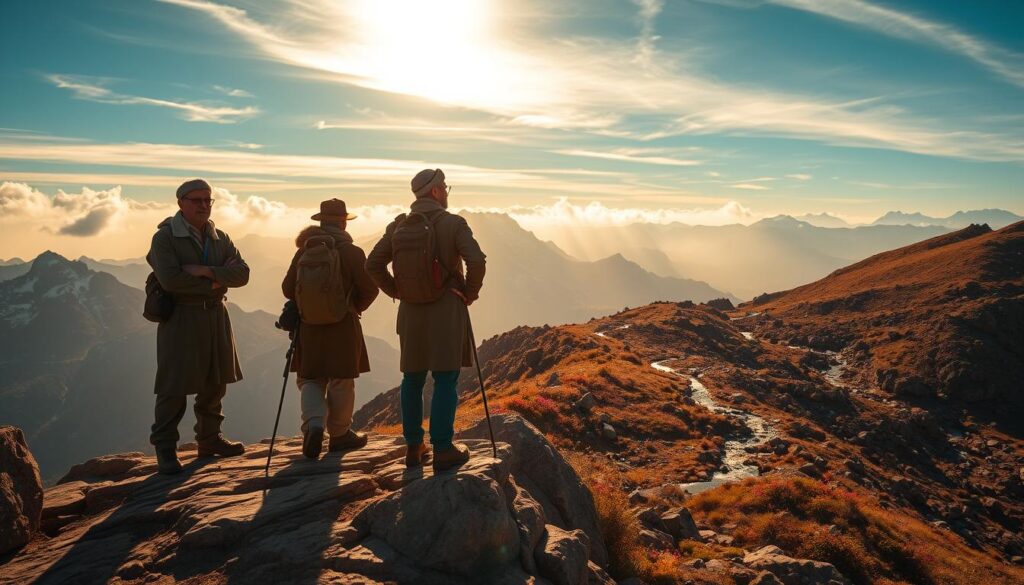
Safety Protocols for Mountain Climbing in Morocco
When you start your Atlas Mountains hike, knowing safety rules is key. The terrain is tough, and the weather can change fast. So, plan and prepare well to have a safe and fun trip.
Preventing and Treating Altitude Sickness
Altitude sickness is a big risk when climbing high peaks like Jebel Toubkal. To avoid it, climb slowly and let your body get used to the higher altitude. Drink lots of water and rest when you first get to high places.
If you feel sick, like headaches or dizziness, rest and drink water. If it gets worse, you might need to go down to a lower place. Talk to a doctor about taking medicine to prevent it.
Weather Hazards and Emergency Procedures
The weather in Morocco’s Atlas Mountains can be very unpredictable. Be ready for sudden changes in temperature and rain. Always check the weather forecast before you go and watch for signs of changing weather.
Creating an Emergency Action Plan
It’s important to have an emergency plan. Know the best ways to get out of trouble, have a way to call for help, and carry important emergency items.
| Weather Condition | Action |
|---|---|
| Heavy Snowfall | Postpone your climb, seek shelter |
| High Winds | Avoid exposed areas, secure gear |
| Thunderstorms | Avoid high ground, stay away from metal objects |
First Aid Essentials for Remote Trekking
It’s crucial to have a good first aid kit. Include bandages, antiseptic wipes, pain relievers, and any medicines you need. Knowing basic first aid can save lives.
Accessing Medical Resources in Mountain Areas
If you get seriously hurt or sick, knowing how to find medical help is important. Look up local hospitals and clinics near your route. Have a plan for getting help if you need to.
Photographing the Moroccan Atlas Range
The Moroccan Atlas Range is a dream for photographers. It offers stunning views and a rich culture. To get the best shots, know the best spots, what gear to use, and how to respect the place.
Prime Locations and Times for Landscape Photography
The Moroccan Atlas Range has many beautiful landscapes. The best times are during sunrise and sunset. These hours show the mountains in their most majestic light.
- Early morning shots of the rising sun over the peaks
- Late afternoon captures of the valleys and villages
Capturing Traditional Villages Against Mountain Backdrops
Photographing Berber villages needs care and respect. Always ask for permission first. The old villages against the mountains make for amazing photos.
“The beauty of the Atlas Mountains is not just in their grandeur, but in the stories they tell through the lens of a camera.”
Equipment Recommendations for Mountain Conditions
Right gear is key for Atlas Mountains photography. You’ll need a strong tripod, camera that can handle the weather, and good hiking boots.
| Equipment | Purpose |
|---|---|
| DSLR or Mirrorless Camera | High-quality image capture |
| Wide-angle Lens | Landscape and scenery photography |
| Tripod | Stability for low-light shots |
Ethical Photography Practices in Berber Communities
Respect is key when taking photos in Berber communities. Always get permission first. Be ready to talk with the locals.
Following these tips helps you take great photos. It also helps keep the area’s culture alive.
Conclusion: Embracing the Timeless Wonder of the Atlas Mountains
Planning your trip to the Atlas Mountains in Morocco is more than just a trek. It’s an adventure that will amaze you with its natural beauty. The Atlas range offers diverse landscapes, rich culture, and warm hospitality for every traveler.
The Atlas Mountains boast snow-capped peaks and serene lakes and forests. Each area provides a unique experience. Knowing the geography, climate, and culture helps you make the most of your visit.
Exploring Berber villages, dramatic gorges, or simply enjoying the views will captivate you. The Atlas Mountains in Morocco will leave a lasting impression. So, pack your bags, grab your camera, and dive into the timeless wonder of the Atlas Mountains.

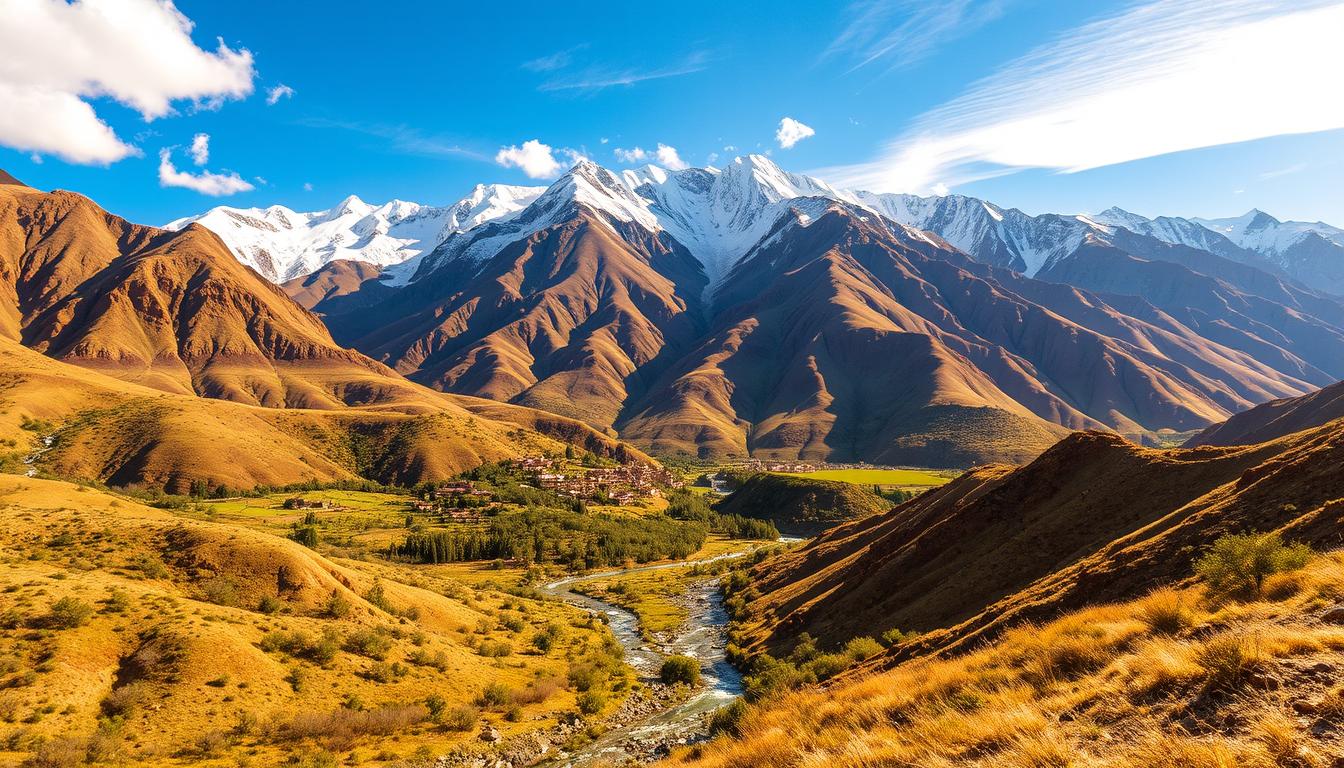


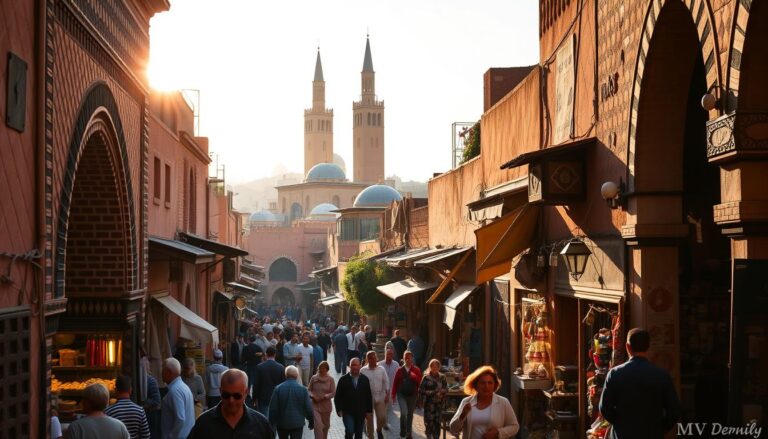
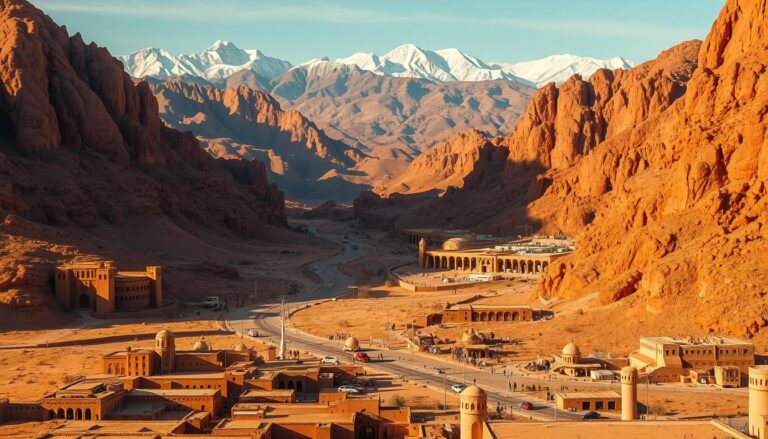
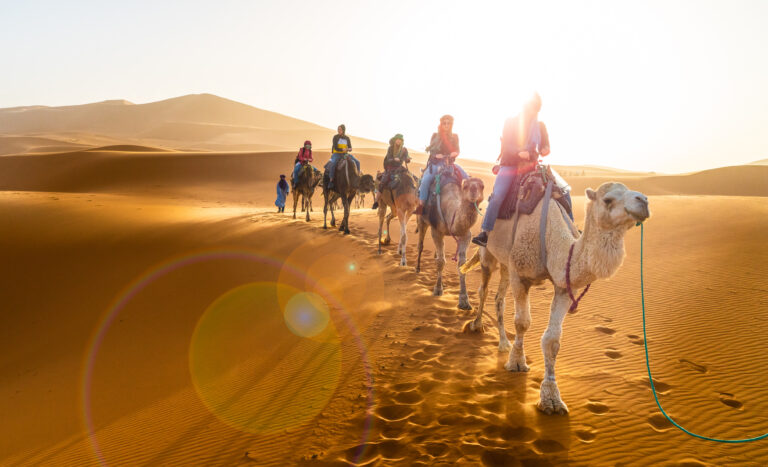
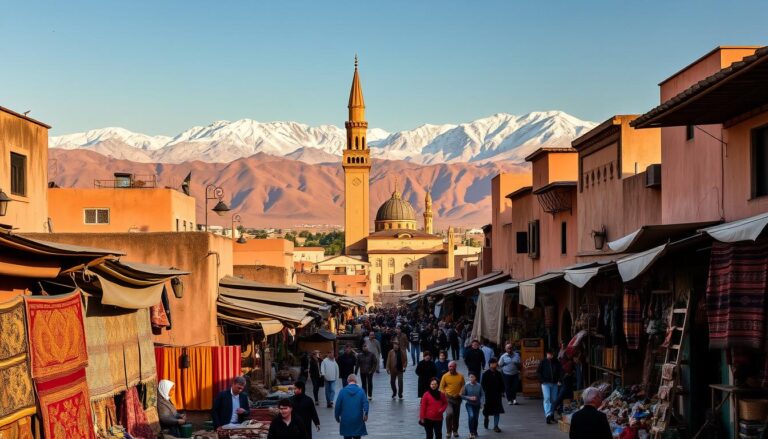
5 Comments